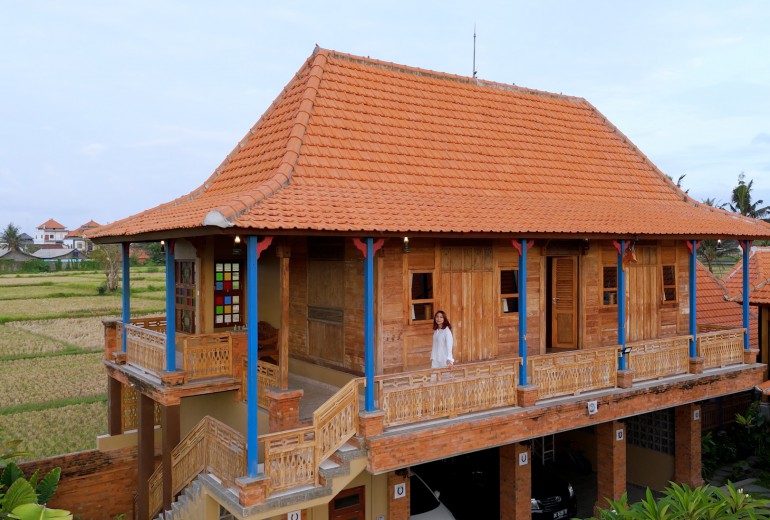Joglo: The Timeless Elegance of Javanese Architecture
Joglo, a traditional house design from Java, Indonesia, stands as a testament to the rich cultural heritage and architectural ingenuity of the Javanese people. Known for its distinctive roof and intricate woodwork, the joglo is more than just a structure; it is a symbol of status, tradition, and the harmonious relationship between humans and their environment.
Historical Background
The joglo house is deeply rooted in Javanese history and culture. Originating from the island of Java, this architectural style has been around for centuries, evolving from the traditional forms of vernacular architecture in the region. Joglo houses were traditionally reserved for the Javanese aristocracy and royalty, serving as a mark of social status and wealth. The construction and design of a joglo house were often reflective of the owner's social standing, with larger and more elaborately decorated houses indicating higher status.
Architectural Features
The Roof:
The most defining feature of a joglo house is its unique roof structure, known as the "Joglo roof." This roof consists of a series of overlapping tiers that create a trapezoidal shape, supported by four main pillars called "soko guru." The soko guru are central to the joglo's design, symbolizing strength and stability. The roof's design allows for excellent ventilation and cooling, making it well-suited to the tropical climate of Java.
Woodwork and Carvings:
Joglo houses are renowned for their intricate woodwork and carvings. The wooden beams, pillars, and panels are often adorned with detailed carvings depicting scenes from Javanese mythology, floral motifs, and geometric patterns. These carvings are not just decorative but also carry symbolic meanings, reflecting the spiritual beliefs and cultural values of the Javanese people.
Layout and Design:
The layout of a joglo house is typically divided into several distinct areas, each serving a specific purpose. The central area, or "pendopo," is an open pavilion used for receiving guests and hosting ceremonies. Surrounding the pendopo are enclosed living spaces, including the "dalem" (private quarters) and "pringgitan" (transition space). The open and airy design of the joglo allows for a seamless connection between indoor and outdoor spaces, fostering a sense of harmony with nature.
Cultural Significance
Joglo houses are more than just architectural structures; they embody the cultural and spiritual values of the Javanese people. The design principles of the joglo reflect the Javanese philosophy of "manunggaling kawula lan gusti" (the unity of humans and the divine). The hierarchical structure of the joglo, with its central pillars and tiered roof, symbolizes the connection between the physical and spiritual worlds.
The joglo also plays a significant role in community life. Traditionally, joglo houses served as centers for social gatherings, cultural ceremonies, and communal activities. The open pendopo space was used for traditional performances, weddings, and other important events, reinforcing the joglo's role as a focal point of Javanese social and cultural life.
Modern Adaptations
In contemporary times, the joglo continues to inspire modern architectural designs in Indonesia and beyond. While traditional joglo houses are still preserved and maintained, modern interpretations of the joglo incorporate contemporary materials and construction techniques. Architects and designers often blend the traditional elements of the joglo with modern amenities to create spaces that honor the past while meeting the needs of the present.
The enduring appeal of the joglo lies in its timeless elegance, functional design, and deep cultural significance. As an architectural icon of Java, the joglo remains a powerful symbol of the island's rich heritage and the enduring spirit of its people.
Conclusion
The joglo house is a remarkable representation of Javanese architectural excellence and cultural heritage. Its distinctive roof, intricate woodwork, and symbolic design make it a timeless structure that continues to inspire and captivate. As both a historical artifact and a living tradition, the joglo stands as a testament to the creativity, craftsmanship, and cultural depth of the Javanese people. Whether preserved in its traditional form or adapted for modern use, the joglo remains a cherished symbol of Java's architectural legacy.
